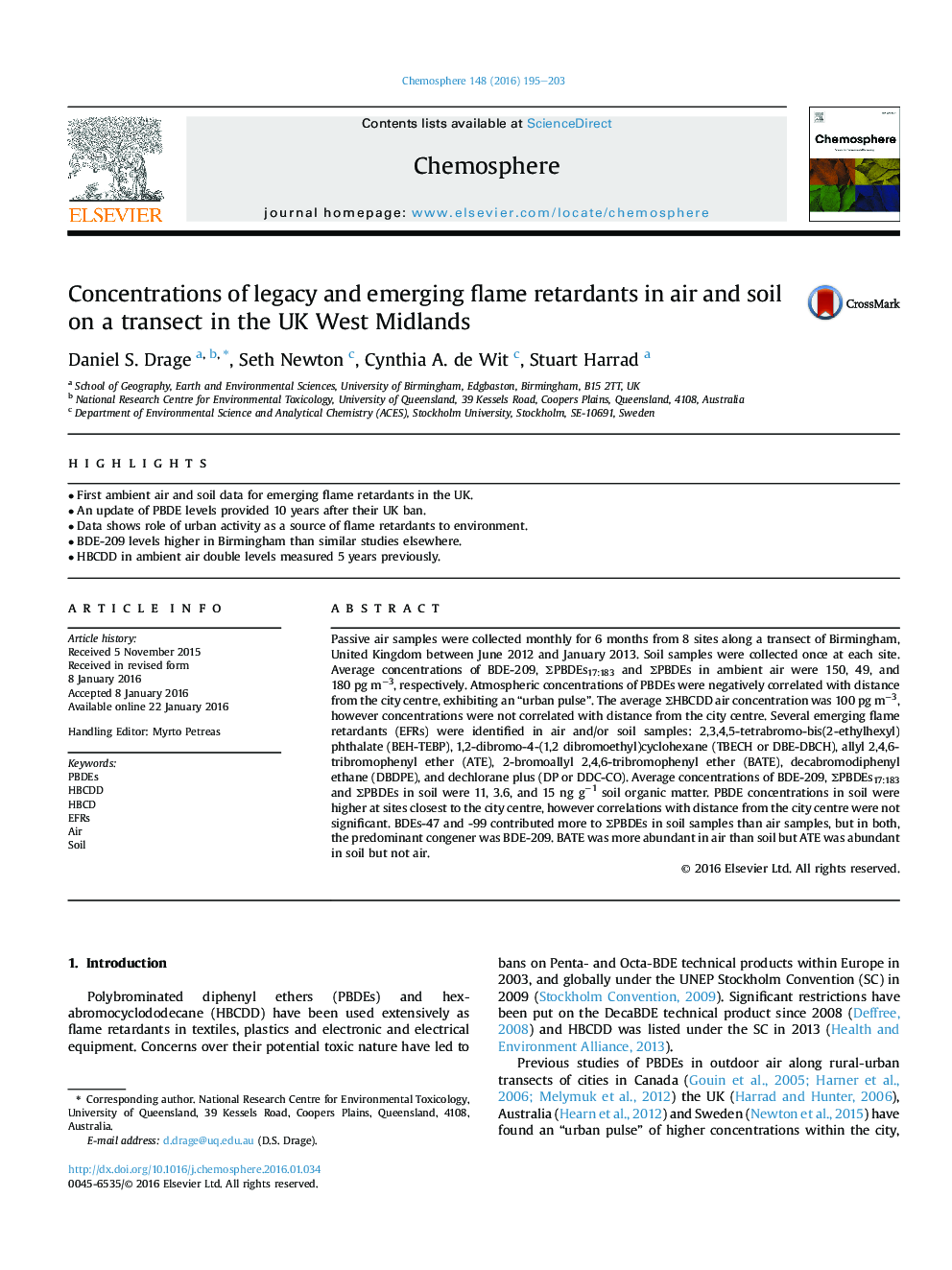| کد مقاله | کد نشریه | سال انتشار | مقاله انگلیسی | نسخه تمام متن |
|---|---|---|---|---|
| 4407813 | 1618823 | 2016 | 9 صفحه PDF | دانلود رایگان |
• First ambient air and soil data for emerging flame retardants in the UK.
• An update of PBDE levels provided 10 years after their UK ban.
• Data shows role of urban activity as a source of flame retardants to environment.
• BDE-209 levels higher in Birmingham than similar studies elsewhere.
• HBCDD in ambient air double levels measured 5 years previously.
Passive air samples were collected monthly for 6 months from 8 sites along a transect of Birmingham, United Kingdom between June 2012 and January 2013. Soil samples were collected once at each site. Average concentrations of BDE-209, ΣPBDEs17:183 and ΣPBDEs in ambient air were 150, 49, and 180 pg m−3, respectively. Atmospheric concentrations of PBDEs were negatively correlated with distance from the city centre, exhibiting an “urban pulse”. The average ΣHBCDD air concentration was 100 pg m−3, however concentrations were not correlated with distance from the city centre. Several emerging flame retardants (EFRs) were identified in air and/or soil samples: 2,3,4,5-tetrabromo-bis(2-ethylhexyl) phthalate (BEH-TEBP), 1,2-dibromo-4-(1,2 dibromoethyl)cyclohexane (TBECH or DBE-DBCH), allyl 2,4,6-tribromophenyl ether (ATE), 2-bromoallyl 2,4,6-tribromophenyl ether (BATE), decabromodiphenyl ethane (DBDPE), and dechlorane plus (DP or DDC-CO). Average concentrations of BDE-209, ΣPBDEs17:183 and ΣPBDEs in soil were 11, 3.6, and 15 ng g−1 soil organic matter. PBDE concentrations in soil were higher at sites closest to the city centre, however correlations with distance from the city centre were not significant. BDEs-47 and -99 contributed more to ΣPBDEs in soil samples than air samples, but in both, the predominant congener was BDE-209. BATE was more abundant in air than soil but ATE was abundant in soil but not air.
Journal: Chemosphere - Volume 148, April 2016, Pages 195–203
